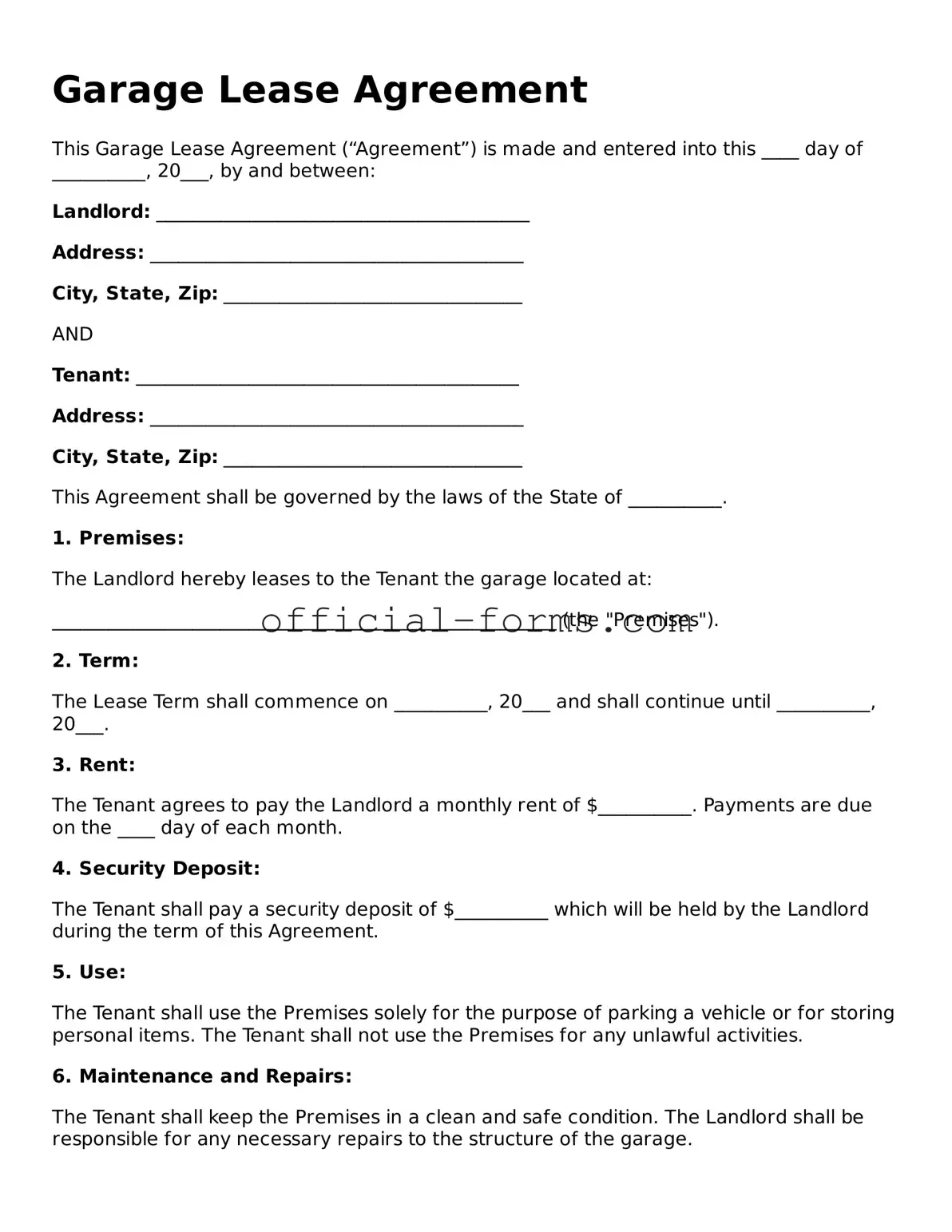Attorney-Verified Garage Lease Agreement Template
A Garage Lease Agreement is a legal document that outlines the terms and conditions between a landlord and a tenant for renting garage space. This agreement specifies the duration of the lease, payment terms, and responsibilities of both parties. Understanding this form is essential for ensuring a smooth rental experience.
Open My Garage Lease Agreement Now
